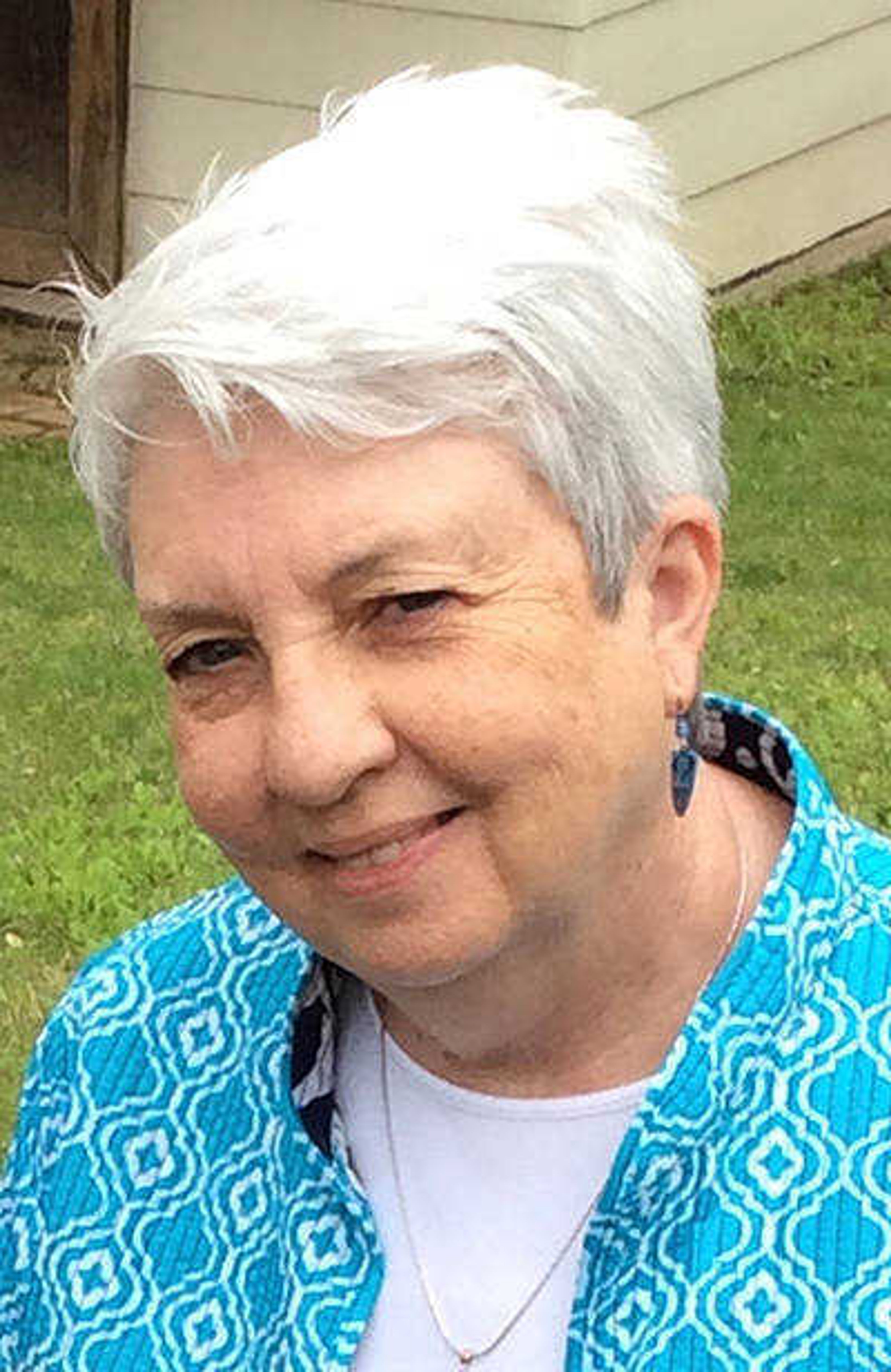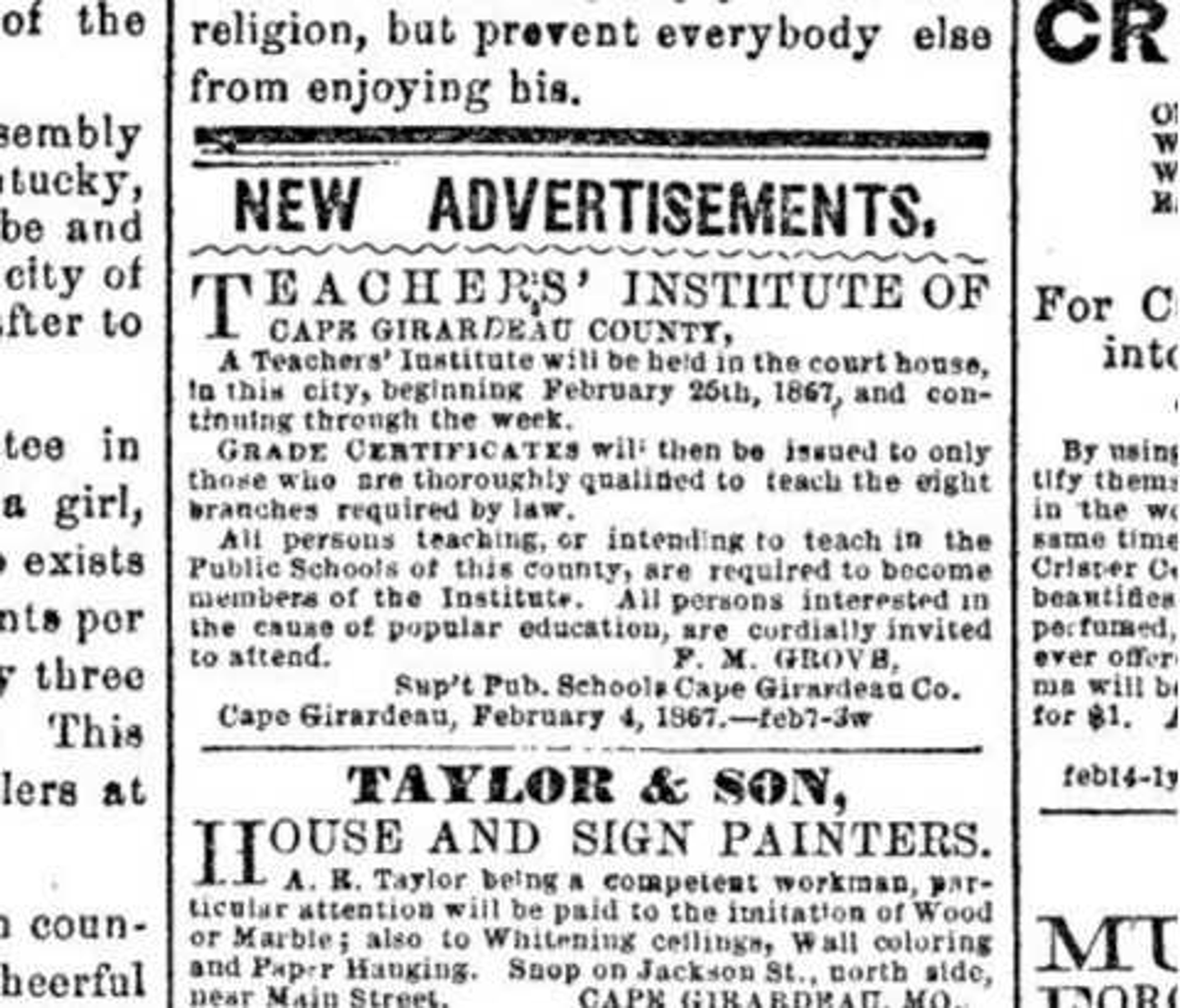February 1865, a month after slavery was abolished in Missouri, the State Legislature approved annual appropriations of $25 for the education of Union soldier's orphans from Cape Girardeau County. Ten of the 22 children were of African descent, including three children of James and Harriet Ivers. But no school existed to admit black students. Laws enacted in 1847 still stood in Missouri, making it a crime to instruct African-Americans -- free or enslaved -- to read or write. By November, legislators wrote into the new State Constitution requirements for township boards of education to provide "Common Schools for Colored Children," to afford the advantages and privileges of education wherever 20 students, ages 6-21, were in residence but provided no funding.
People were in place in the city of Cape Girardeau, ready and capable to provide rudimentary education for the newly freed population before law required it. In August 1865, as Union troops concluded four years of military occupation and left town, Samuel Newlin opened the first sessions of school for students of African descent. "Professor" Newlin was described in census data as mulatto, born in North Carolina about 1839. Strategically, Newlin shaped the city's future during this critical period of social reorganization. In only his mid-20s, he had already proved his leadership in organizing lasting, foundational institutions on which Cape Girardeau's black population would build for centuries to come. In 1863, Newlin was one of four men instrumental in the formation of St. James Methodist "Mission Society," which evolved into St. James African Methodist Episcopal Church, intricately situated to societal uplift to the present day.
Newlin's school met in the Union Aid Society building on Fountain Street near Bellevue. The first "First Day of School" must have been a joyous and bewildering experience for participants and observers. It was reported 80-90 students -- men, women and children -- eagerly gathered in the make-shift, underfunded setting and were instructed in the basics of literacy.
State law to provide equal school rights met resistance in the community, which was reluctant and sometimes hostile to change. In 1867, F.M. Grove, Cape Girardeau County's public school superintendent, announced a teacher's institute to fulfill the state obligation for public teacher certifications. Newlin arrived at the appointed day and time at the Common Pleas Courthouse to meet his certification obligation. The Feb. 28, 1867, edition of Cape Girardeau Weekly Argus newspaper reported, "his Ethiopian color gave offence to Caucasian blood, and a few moments left Mr. Newlin the only representative of teachers in the hall of the Institute." The editor lamented, "We hope Mr. Newlin will be allowed for the future, to take his seat without dissolving the assembly."
Twenty-four years later, under the leadership of John S. Cobb, a two-week institute for teachers was promoted. Black teachers from 17 counties were invited to Cape Girardeau in 1891, for training and self-improvement. Despite growing segregation, commitment to quality education moved slowly forward with Cape Girardeau leading the way.
Connect with the Southeast Missourian Newsroom:
For corrections to this story or other insights for the editor, click here. To submit a letter to the editor, click here. To learn about the Southeast Missourian’s AI Policy, click here.










